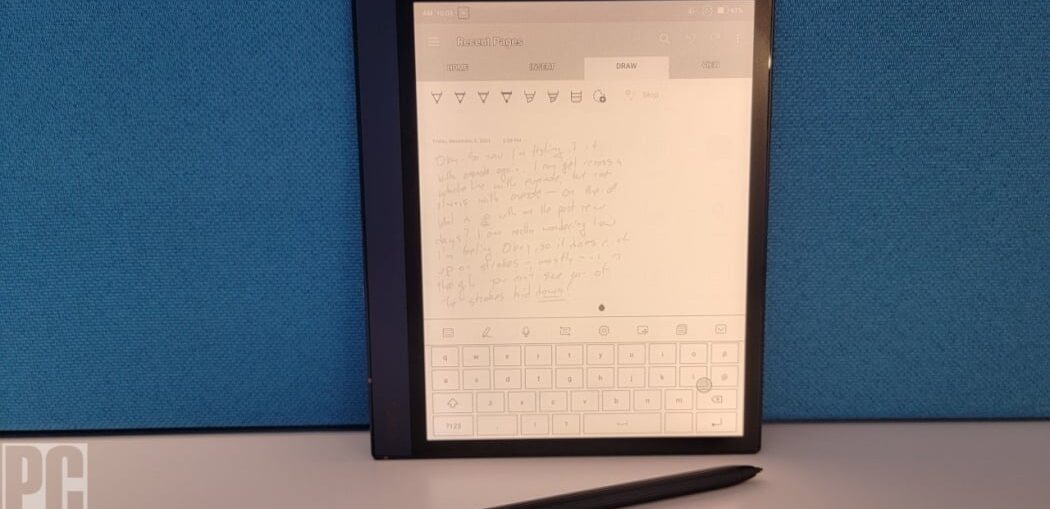
In an era where digital clutter vies for our attention, effective online note-taking has become a subtle art — essential for academics, professionals, and creatives alike. This indispensable skill, once confined to pen and paper, is now rapidly evolving with the advent of artificial intelligence (AI).
AI-based note-taking tools are not just a modern convenience; they are poised to redefine productivity in the digital age. This article explores the symbiotic relationship between AI and online note-taking, unraveling the benefits, the potential challenges, and the promising future that lies ahead.
The Notes of Yesterday
Before AI, the act of taking and organizing notes was a labor-intensive task. In the classroom, notetakers would scramble to capture a lecture’s key points, often missing nuances in their haste. Professionals would document meetings, extracting action items and insights, only to spend additional hours deciphering their scribbles and typing them up. This process was not only time-consuming but inherently flawed, leaving room for error and oversight.
AI Note-Taking: A Game-Changer
Enter AI note-taking — a game-changer in the world of cognition management. AI-powered systems offer a constellation of benefits, starting with real-time transcription and note-organization capabilities. Automated tools can discern and extract salient points from spoken or written content, arrange them hierarchically, and even assign categories and labels.
This transformation carries substantial implications for both individual and collective productivity. With AI, the immediacy of having a meeting transcript or a lecture summary is no longer a luxury but an expectation. Furthermore, the intelligent categorization can provide a holistic view of one’s notes, allowing rapid access to specific topics and an improved learning experience.
How AI Enhances Note Organization
The crux of note-taking has always been in the subsequent retrieval and understanding of information. AI excels in this aspect, offering features such as smart search, summarization, and inter-linking of related notes. These capabilities transform the static nature of notes into an active system that can be navigated and understood with exceptional ease.
The Evolution of Learning
In education, AI notetaking tools are democratizing knowledge. Students can now absorb course material at their own pace, with annotations and summaries tailored to their learning style. For educators, this dynamic shifts the focus from content delivery to fostering discussion and critical thinking.
However, AI in learning is not without its challenges. It raises important questions about the intellectual rigor of the learning process. Can AI capture and convey the underlying context and connections as effectively as a human? Despite these concerns, the role of AI in education appears firmly cemented as a complementary force, not a replacement.
The Future of AI in Note-Taking
As AI continues to advance, the future of note-taking will witness even more sophisticated integrations. We can anticipate tools that not only transcribe and organize notes but also offer contextual insights and prompt user actions. Imagine a world where note-taking is not merely a passive record but an active guide through complex information landscapes.
Critically Analyzing AI-Transformed Notes
In professional settings, AI-generated notes raise the bar for accountability and accuracy. Legal and medical transcription services, for example, are now not just faster but also potentially more precise. Yet, there’s a fine line to tread; over-reliance on AI for critical tasks can lead to complacency and a decline in human expertise.
The challenge for professionals lies in critically analyzing AI-generated content, being mindful of its origins and potential biases. The future requires a workforce that can leverage AI’s strengths while maintaining a high degree of skepticism and human insight.
The Human Element
AI may be the engine powering note-taking tools, but the human element remains the compass. It’s the user who infuses notes with personal context, critical analysis, and creativity. In essence, the best AI note-taking systems will be those that understand and adapt to human needs and behaviors.
The collaborative potential of AI note-taking is enormous. Teams can co-create documents, share insights, and leverage AI to ensure that every voice is heard and every idea is captured. The future of work and collaboration will be less about individual contributions and more about the collective intelligence harnessed through AI.
Conclusion
AI note-taking represents a seismic shift in how we manage and interact with information. From individual productivity to the enhancement of collective learning, the benefits are far-reaching. However, it’s imperative to approach this technological wave with a balanced perspective. The amalgamation of AI and note-taking is not about replacing our cognitive abilities but about amplifying them.
As we venture into this AI-centric world, the key will be in our ability to adapt and learn alongside the tools we create. The future of note-taking is one where AI and human intelligence coexist, creating a landscape of enhanced possibility and potential for growth. This is the horizon we’re heading towards, and it’s ripe with opportunity for those who dare to explore it.
